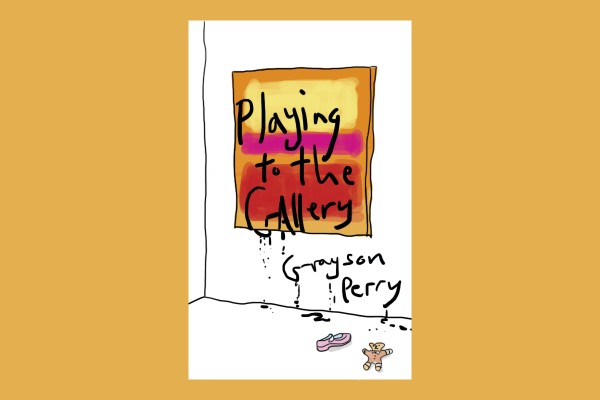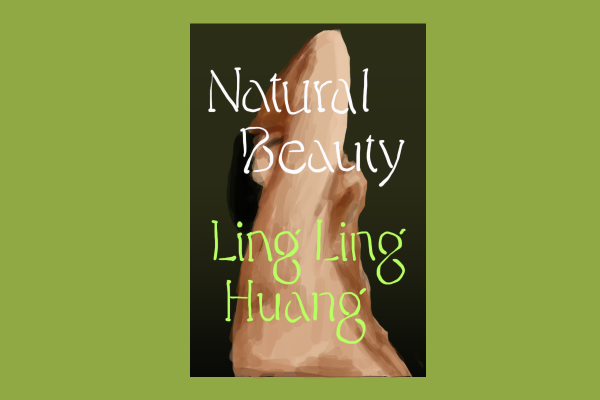“Playing to the Gallery: Helping Contemporary Art in Its Struggle to Be Understood” by Grayson Perry
— Alexa Donovan, Deputy Arts Editor

My copy of “Playing to the Gallery: Helping Contemporary Art in Its Struggle to Be Understood” has coffee stains on the cover, pages warped from water damage and a torn spine. I have read the book at least once a year since I bought it during my first year of high school, curious about the contemporary art scene. And by my sophomore year of college, my copy’s wear-and-tear is just evidence of how deeply I love it.
“Playing to the Gallery” is a criticism of the elitist nature of the art world, with each chapter answering a new question, such as “What counts as art?” and “How do you become a contemporary artist?” The book is written and illustrated by visual artist Grayson Perry, who has been a part of the art scene for decades, with his work shown at internationally acclaimed galleries. Perry is the perfect author to write such a book — he understands the ins and the outs of the arts world, and can gawk at its faults while also praising its positive aspects.
Perry is funny and witty, and his writing is approachable — a rarity when it comes to discussing the fine arts. This book helped me understand what I was looking at long before I began to study the arts in college, and now, even after two years of coursework on traditional art history, the book serves as a helpful companion to ground me after a long day of reading a textbook.
“Happy Place” by Emily Henry
— Ariana Wahab, Editor-at-Large

“Happy Place”by Emily Henry follows the story of the recently broken-up Harriet and Wyndham, who pretend to be together during their friend group’s annual trip to Knott’s Harbor, Maine. The cottage they stay at every year is up for sale, and Harriet and Wyn don’t want to spoil the memories of their last vacation all together. Parth and Sabrina, decide to throw an impromptu wedding before the house is sold. Thus, Harriet and Wyn are faced with the challenge of making nice with one another so they can put on the show for their friends. As a result of this, Harriet’s time at the cottage becomes an utter nightmare for her as she faces her feelings about Wyn and their breakup.
One of things that shines in “Happy Place” is the friend group’s dynamics. Henry perfectly captures the individual personalities present in the group, and shows realistic interactions between the friends. Additionally, the dialogue and chemistry between Harriet and Wyn is dynamic and keeps the reader turning the pages. Henry does a great job capturing the tension that still is present between them and it pours through the pages. If you’re yearning for summer or just need an escape from finals season, Henry’s “Happy Place” might just be the book for you.
“Natural Beauty” by Ling Ling Huang
— Aarna Dixit, Contributing Writer

I simply could not put “Natural Beauty” by Ling Ling Huang down while I was reading it. This eerie, page-turning novel had me gasping every minute, as I frantically tried to make sense of what was unfolding.
A poignant piece of satirical horror, “Natural Beauty” explores the beauty and wellness industry in the context of issues like classism, racism and sexism. The book follows an unnamed young musician, who, after having faced a familial tragedy, begins working at a high-end beauty and wellness store in New York City called Holistik. The store is known for its strange specialty products and procedures, like spider-silk eyelash extensions. The store’s inner workings are sinister and ominous, and the store’s status puts our narrator in a web of privilege and pretension. Huang also explores the musician’s family’s history in the Chinese Cultural Revolution and her own immigrant identity.
Huang’s debut novel is a piercing commentary on consumption, self-worth and identity.
“Home Fire” by Kamila Shamsie
— Ethan Beck, Staff Writer

In “Home Fire,” British-Pakistani author Kamila Shamsie presents timeless familial tragedy — envisioned as a modern telling of Sophocles’ play “Antigone” — against the backdrop of the war on terror.
The book follows three siblings, Isma, Aneeka and Parvaiz. Isma is heading to University of Massachusetts Amherst to work on her Ph.D. Anneka is in London for law school, and falls in love with Eamonn Lone, an aimless young man whose father, Karamat, was recently appointed Home Secretary of England. Parvaiz has disappeared from London, and it’s discovered that he has moved to Syria after being recruited to fight for Islamic State group.
Throughout the book, Shamsie attempts to undermine British politicians who used the moral panic about jihadi organizations to persecute British Muslims, and, in the same breath, she humanizes but does not valorize Parvaiz.
“Home Fire” is divided into five sections, each of which closely follows the protagonists through violent crescendos, family inheritances, questions of wounded masculinity, the extraordinary intrusions of state power and sensual, thrilling relationships. But Shamsie’s formal gambits, warm and sympathetic characters and mostly believable melodrama make “Home Fire” one of the most deliberative novels about cultural and national identity I’ve ever read.
Contact the Arts Desk at [email protected].





















































































































































